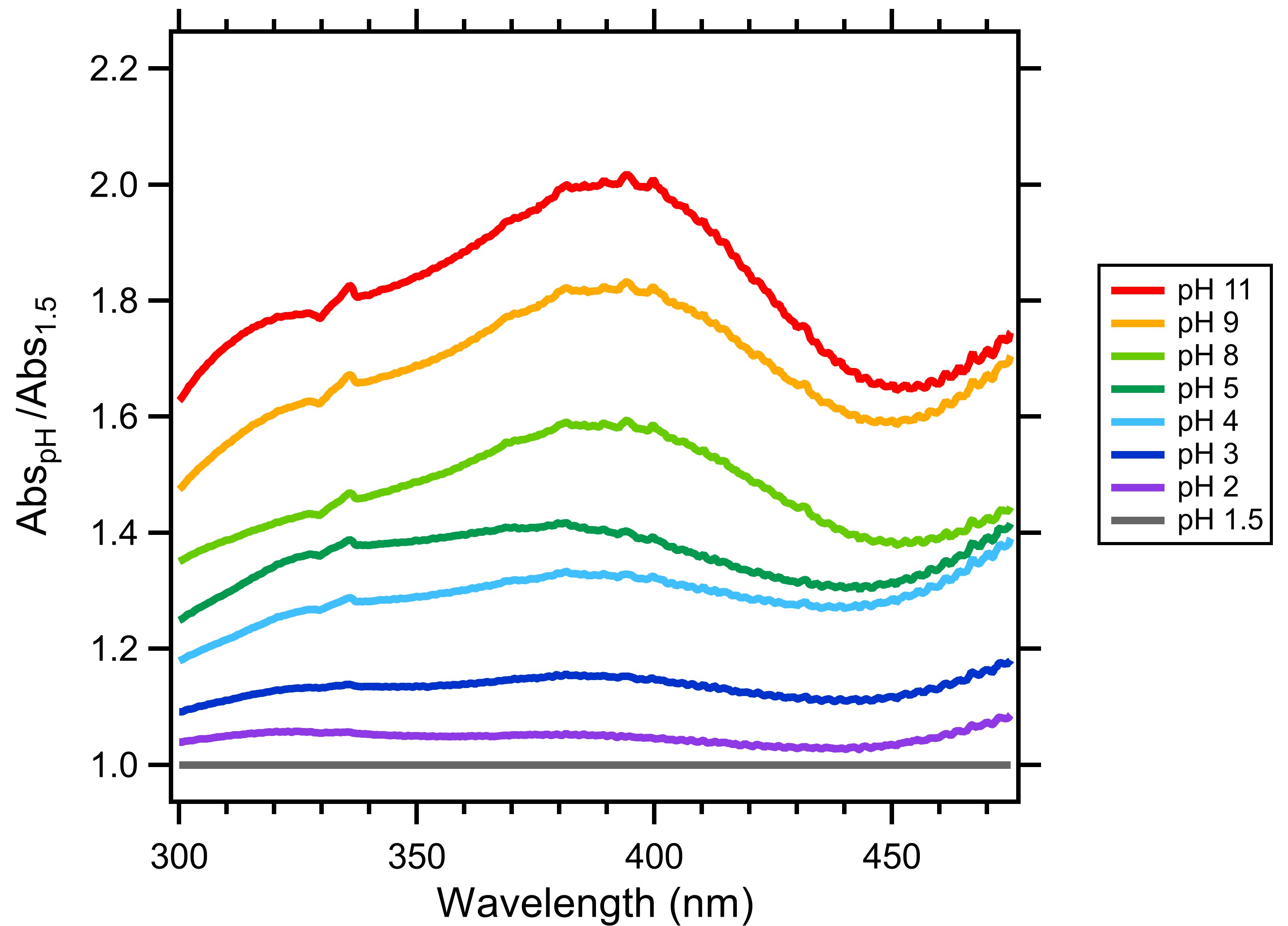pH dependence of brown-carbon optical properties in cloud water
Submitter
Hennigan, Christopher — University of Maryland, Baltimore County
Area of research
Aerosol Processes
Journal Reference
Science
Organic molecules in the atmosphere that absorb light are collectively called "brown carbon (BrC)". In this work, we show that the optical properties of BrC in real atmospheric cloud water samples are highly sensitive to pH.
Impact
This work demonstrates the important role of pH -- whether in cloud or fog droplets or deliquesced aerosol particles -- on the radiative forcing of brown carbon. These results also show that many measurements of brown-carbon optical properties perturb the pH from ambient conditions by drying the samples, which challenges the translation of these measurements to capture the radiative forcing of atmospheric BrC.
Summary
Light-absorbing organic species present in aerosols, collectively called brown carbon (BrC), contribute important but highly uncertain effects on climate. The acidity (or pH) of atmospheric particles and clouds affects the optical properties of BrC and bleaching rates. Given the wide variability of pH in the atmosphere (pH in particles and clouds ranges from -1 to 8), the optical properties of BrC and its bleaching behavior are expected to vary significantly, and the link between pH and BrC is yet another uncertainty in attempts to constrain its climate forcing effects. In this work, we characterize the pH dependence of BrC optical properties in bulk cloud water sampled from the summit of Whiteface Mountain, New York. In all samples (n = 17), Abs365 and MAC365 increased linearly with increasing pH. There was strong variability in the sensitivity of Abs365 to pH, with normalized slopes that ranged from 5.1% to 17.2% per pH unit. AAE also showed a distinct pH dependence, as it was relatively flat between pH 1.5 and 5, then decreased significantly above pH 5. Overall, these results show that, in addition to secondary BrC production, photobleaching, and the altitudinal distribution, the climate forcing of BrC is quite strongly affected by its pH-dependent absorption.


